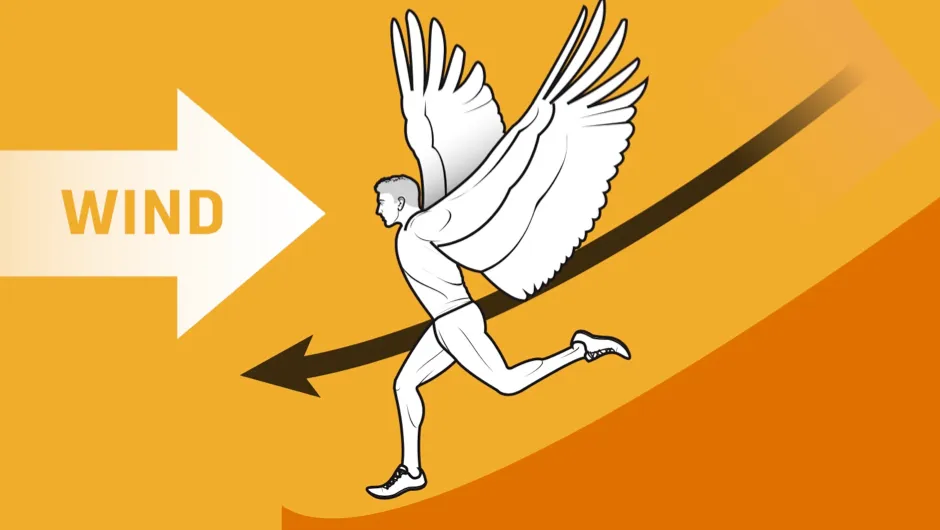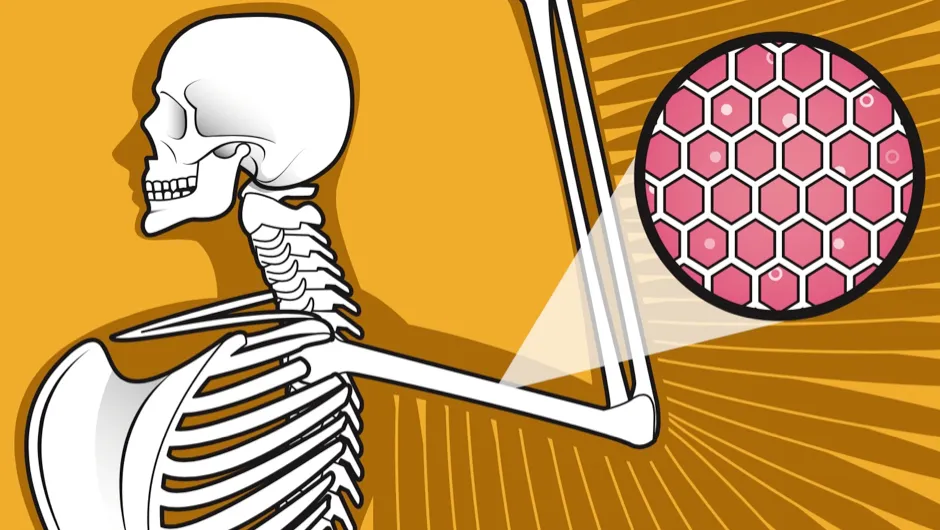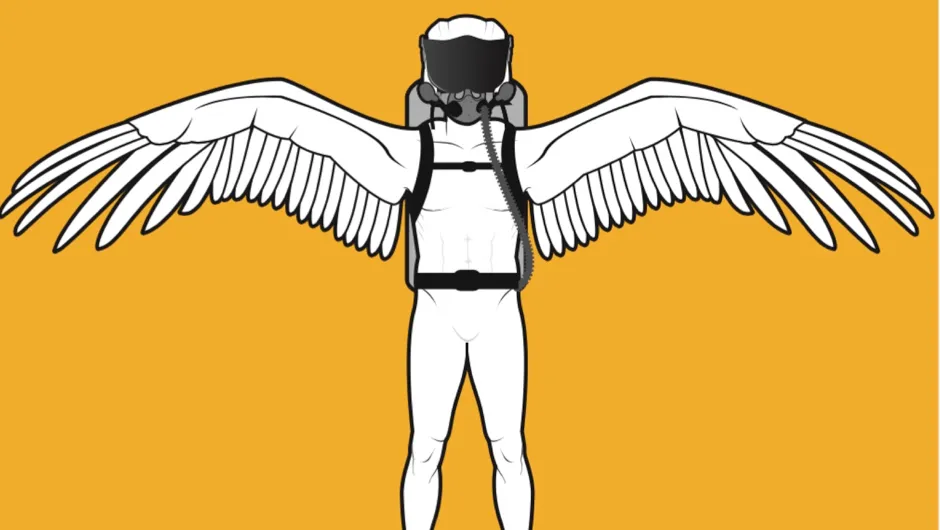1
Wings

The heaviest-ever flying bird was Argentavis magnificens, which lived six million years ago. It had a similar height and weight to an adult human, with a wingspan of six metres. These wings would have been too large and hefty for continuous flapping, so it probably flew more like a glider, taking off by running downhill into a headwind. We’d have to adopt a similar flying style.
2
Muscles and bones

To flap these wings, we would need pectoral muscles twice the size of a pro bodybuilder’s. Our bones would be lighter and therefore weaker, so we’d need to strengthen our collarbone by fusing the clavicles into a wishbone. We’d also need a ‘keel’ bone protruding down the centre of our chest, to allow the pectoral muscles to attach further from the shoulder, increasing their leverage.
3
Technology

Even with all this, we probably couldn’t fly unaided. Birds have a more efficient one-way airflow through their lungs to get more air with each breath, and their muscles have extra oxygen-carrying proteins. Their nervous system runs faster to give them the reaction times needed for in-flight manoeuvring. We would need help from an oxygen cylinder, and a flight computer with a heads-up display.
Read more thought experiments:
- What would happen if everyone on the planet suddenly went vegan?
- What would living on Mars do to my body?
Subscribe to BBC Focus magazine for fascinating new Q&As every month and follow @sciencefocusQA on Twitter for your daily dose of fun facts.